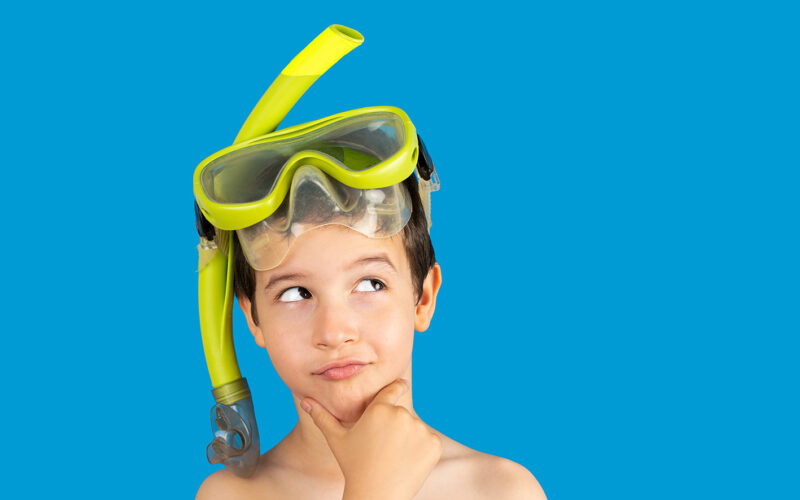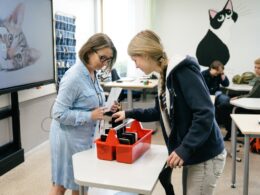July and August are eagerly anticipated by students in Malta as they enjoy a welcome and well-deserved break. Using Edward de Bono’s ‘Six Thinking Hats’ technique, this article explores the psychological impact of summer from different angles.
A key theme throughout is the role of metacognition, that is, the ability to think about one’s thinking, as a guiding tool for students to navigate summer with balance and purpose.
White hat: what do we know?
The brain’s prefrontal cortex, that is, the part responsible for decision-making, emotional regulation and executive function, is still developing during the teenage years. Throughout the scholastic year, routine reinforces neural pathways related to focus, time management and goal-setting.
During summer, if students choose to spend their time without cognitive stimulation, this may slow neuroplastic processes, that is, the brain’s ability to adapt, grow and reorganise in response to new experiences.
This does not mean that students must continue formal study throughout summer. Rather, it highlights the importance of maintaining a gentle rhythm of learning, curiosity and self-reflection, all of which are core components of metacognitive development.
Red hat: emotions and intuition
Emotionally, summer can yield either positive stimulation or boredom. Some children find joy, connection and restored self-esteem through time with family, nature or unstructured activity. Others experience boredom, loneliness or even anxiety, especially when days become aimless.
Social media often intensifies this, presenting the best moments of others’ lives, such as travel, friendships, achievements and good times. These may prompt unhealthy comparisons.
A lack of routine can lead to disrupted sleep, poor eating habits and excessive time online, all of which are linked to diminished mood and concentration.
Without moments of conscious awareness, of checking in with one’s emotional and cognitive state, some students may drift rather than recharge.
Encouraging metacognitive habits, such as emotional journaling or daily analysis of their thought processes, can help them better understand and regulate their inner world.
Black hat: the cautionary view
For some students, particularly those who already struggle academically, the summer break may result in “learning loss” or the “summer slide”. Moreover, when students disconnect completely from self-directed learning, they risk losing the metacognitive momentum gained during the year, such as setting goals, monitoring their progress or reflecting on their learning strategies.
Neuroplasticity thrives on moderate challenge, and the absence of purposeful activity can weaken the very gains students have built through effort, reflection and perseverance.
Yellow hat: the bright side
Summer can also be a deeply enriching time. It allows children to replenish their mental and emotional resources, engage in spontaneous activities, or simply pause.
Doing nothing, contrary to what most think, can be beneficial. Quiet reflection or daydreaming may activate the brain’s default mode network, which is essential for creativity, planning and self-understanding.
When children are encouraged to analyse their thought processes, even in leisure, they become more in tune with their values, interests and goals.
A summer that includes both rest and reflection fosters resilience and self-awareness. These are key dimensions of well-being that metacognitive thinking helps to nurture.
Green hat: creative alternatives
Some students take on summer jobs, earning pocket money while building responsibility and life experience. Others attend private lessons or revision classes in preparation for MATSEC September exams, often charging their resilience and determination.
When students intentionally blend relaxation with growth and engage in mindfulness, journalling, creative projects or collaborative activities, they nourish both the mind and the heart. These habits are more than productive; they foster metacognitive awareness by helping students answer questions such as: “What am I learning? How am I feeling? And what do I need right now?”
Blue hat: managing the balance
Ultimately, balance is key. Summer should not mirror the structure of school, but neither should it abandon all sense of rhythm. A healthy routine, including adequate sleep, reduced screen time, light revision, physical activity and meaningful engagement, supports both the brain and the body.
How parents and educators can help
Parents and educators can have a significant influence. Rather than imposing rigid rules or letting students drift, they can nurture autonomy by guiding young people to set small, achievable goals.
Encouraging teens to reflect on how they spend their time and how it makes them feel, develops metacognitive capabilities that will serve them well beyond summer. Let us not underestimate the value of doing less, but let us do it mindfully.
The greatest gift we can offer our children and students is not just time off, but time used wisely, in which they not only recharge but also grow in self-understanding. Through metacognition, summer becomes not a pause in learning, but a powerful continuation of it.
Josephine Ebejer Grech is a doctoral candidate specialising in the neuroscience, neuroplasticity, metacognition, well-being and academic resilience of post-secondary students.
Read also ‘My brain’s (not) on holiday!’ For more education-related articles, click here. For more Child stories, follow this link.










